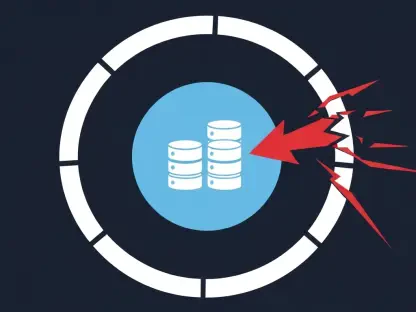In the fast-paced realm of software development, where efficiency often spells the difference between success and stagnation, Google has unveiled a compelling open-source project known as Mangle, crafted in the robust Go programming language. Hosted on GitHub, this tool emerges as a subtle yet intriguing addition to Google’s extensive array of developer resources, aiming to elevate productivity by addressing niche challenges like data manipulation or code transformation. Though still in its formative phase, Mangle embodies Google’s unwavering commitment to delivering scalable, efficient solutions that empower programmers worldwide. As part of a broader mission to refine complex workflows, this project hints at untapped potential for developers seeking innovative ways to streamline their processes. This article explores the underpinnings of Mangle, its technical strengths, community dynamics, security focus, and its place within the competitive tech landscape, shedding light on why it might become a vital asset for the coding community.
Technical Foundations of Mangle
Exploring the Go-Based Architecture
Mangle’s core strength lies in its foundation built on Go, a programming language celebrated for its efficiency and scalability, making it an ideal choice for high-performance needs in cloud-native environments. This strategic selection suggests that the tool is tailored for low-level operations, possibly involving tasks like name mangling or code transformation, as inferred from its ties to other Google repositories such as Blueprint. Such capabilities could prove invaluable for developers working on intricate systems where speed and reliability are paramount. The architecture not only supports demanding workloads but also aligns with modern development trends that prioritize lightweight, portable solutions. For those navigating complex build processes or data-heavy applications, Mangle’s design offers a glimpse into a future where repetitive, error-prone tasks might be significantly reduced, paving the way for smoother project execution.
While the technical prowess of Mangle is evident, its documentation remains in an early stage, reflecting its status as a nascent project on GitHub with basic files like go.mod and a minimal docs/README.md. This limited guidance, though a starting point, underscores the tool’s raw nature, leaving much room for exploration and customization by early adopters. Developers intrigued by cutting-edge utilities will find this lack of comprehensive tutorials both a challenge and an opportunity to shape the tool’s trajectory through hands-on experimentation. The sparse documentation also signals a call for community input to flesh out use cases and best practices. As such, Mangle stands as a canvas for innovation, inviting tech enthusiasts to dive into its codebase, uncover its potential applications, and contribute to refining its purpose within the broader ecosystem of developer tools.
Unpacking Early-Stage Potential
Beyond its Go-based structure, Mangle’s potential applications hint at solving specific pain points in software development, particularly in areas like data processing or privacy enhancement through obfuscation. While public details remain scarce, the project’s alignment with Google’s history of creating targeted utilities suggests it could address niche but critical needs in code optimization. This focus positions Mangle as a specialized asset for developers tackling unique challenges in large-scale systems. Its early-stage nature means that much of its value lies in what the community might build upon this foundation, turning abstract possibilities into concrete solutions. For now, the tool serves as a spark for curiosity, encouraging experimentation among those who thrive on pushing technical boundaries.
The GitHub repository’s structure further reveals Mangle’s infancy, with essential components present but lacking the polish of more mature projects. Files like the LICENSE and basic README offer a skeletal framework for engagement, yet the absence of detailed guides or examples highlights a gap that needs bridging. This scenario presents a dual-edged sword: while it may deter casual users, it beckons dedicated developers to take an active role in defining the tool’s future. The opportunity to mold Mangle into a tailored solution for specific workflows could be a significant draw for teams looking to integrate bespoke tools into their pipelines. As momentum builds, this initial simplicity might evolve into a robust resource, driven by the insights and needs of its user base.
Community and Open-Source Commitment
Fostering Collaboration
Mangle exemplifies Google’s enduring dedication to open-source innovation, echoing the triumphs of flagship projects like Kubernetes through a permissive licensing model that welcomes broad adoption. This approach not only lowers barriers for entry but also fosters a spirit of shared progress among developers globally. A clear invitation for contributions on GitHub underscores the emphasis on community involvement as a critical engine for growth. By opening the door to collaboration, Mangle taps into a vast pool of talent and ideas, potentially accelerating its refinement and relevance. This model reflects a proven strategy of leveraging collective expertise to transform promising tools into indispensable resources within the tech sphere.
Active engagement on GitHub further amplifies Mangle’s collaborative potential, with the issues page serving as a lively hub for discussions on bugs, enhancements, and feature requests. This dynamic interaction creates a fertile ground for iterative improvement, ensuring that the tool evolves in step with real-world developer needs. Additionally, the availability of deployable artifacts in the releases section simplifies integration into existing systems, offering practical value for both individual coders and enterprises managing extensive data operations. Such accessibility signals Mangle’s readiness for adoption, even in its early form, while the ongoing dialogue among contributors promises to address pain points and expand its utility over time.
Building a Developer Ecosystem
The community-driven aspect of Mangle goes beyond mere participation, aiming to cultivate a vibrant ecosystem where feedback directly shapes the tool’s roadmap. This interactive environment mirrors successful open-source initiatives where user insights often lead to breakthroughs in functionality and usability. For developers, being part of this evolving project means having a stake in its direction, whether through reporting issues or proposing new features that align with specific workflow demands. The potential for Mangle to grow into a cornerstone of productivity tools hinges on this synergy between Google’s initial framework and the practical input from its user base, creating a feedback loop that could drive significant advancements.
Moreover, Mangle’s open-source nature positions it as an attractive option for enterprises seeking customizable solutions without the constraints of proprietary software. The ability to adapt the tool to unique organizational needs, supported by a growing community, offers a compelling case for adoption in sectors handling complex data pipelines. However, the challenge lies in sustaining engagement to ensure a steady flow of contributions and updates. If this collaborative spirit persists, Mangle could emerge as a benchmark for how open-source projects balance corporate backing with grassroots innovation, ultimately benefiting a wide spectrum of tech professionals navigating modern development challenges.
Security and Development Focus
Building Trust Through Updates
Security stands as a cornerstone of Mangle’s appeal, with GitHub’s integrated features like vulnerability scanning and dependency management addressing pressing concerns in an era marked by frequent software supply-chain threats. These safeguards are crucial for developers who prioritize the integrity of their tools amidst rising cybersecurity risks. By embedding such protective measures, Mangle builds a layer of trust that encourages adoption among cautious users wary of potential exploits. This focus on security not only enhances its credibility but also aligns with industry-wide efforts to fortify open-source projects against evolving digital vulnerabilities, making it a reliable choice for sensitive applications.
Evidence of iterative progress further bolsters confidence in Mangle, as regular updates tracked through Open Source Insights demonstrate Google’s commitment to keeping the tool robust and relevant. Version tags, such as the latest noted in public records, reflect a dedication to continuous refinement, ensuring that bugs are addressed and performance is optimized over time. This ongoing development cycle is vital for maintaining the tool’s edge in a competitive field where stagnation can quickly render software obsolete. For developers, this signals a project that isn’t just a one-off release but a living utility poised for long-term support and enhancement, ready to adapt to emerging needs in the coding landscape.
Prioritizing Long-Term Reliability
The emphasis on security within Mangle extends beyond immediate features to a broader strategy of fostering long-term reliability for its users. By proactively managing dependencies and scanning for vulnerabilities, the project mitigates risks that could disrupt workflows or compromise data integrity. This forward-thinking approach is particularly relevant for enterprises integrating open-source tools into critical systems, where even minor lapses can have significant repercussions. Mangle’s commitment to safeguarding its ecosystem reassures stakeholders that security isn’t an afterthought but a fundamental pillar, positioning it as a dependable option amidst a crowded field of developer utilities.
Additionally, the pattern of consistent updates hints at a roadmap geared toward sustainability, where each iteration builds on previous feedback to enhance functionality and stability. This methodical progression ensures that Mangle remains aligned with evolving industry standards, particularly in areas like cloud-native development where adaptability is key. For developers and organizations, this translates to a tool that can grow alongside their needs, reducing the risk of obsolescence. As the project matures, this focus on reliability could become a defining trait, distinguishing Mangle as a trusted companion in tackling complex technical challenges over the coming years.
Industry Implications and Challenges
Positioning in the Tech Landscape
Mangle’s design, rooted in Go, offers promising compatibility with platforms like Google Cloud, potentially streamlining automated builds and supporting data privacy through techniques like obfuscation. This alignment with cloud-native trends positions the tool as a relevant player in an industry increasingly focused on modular, secure development practices. For teams working on intricate systems, the ability to integrate Mangle into existing infrastructures could simplify tasks that often bog down productivity, such as managing large datasets or optimizing codebases. Its potential to enhance workflows in these areas underscores a broader shift toward tools that prioritize both efficiency and security, reflecting the direction in which modern software engineering is heading.
However, the road to widespread adoption is not without obstacles, as Mangle faces hurdles like limited public commits and sparse documentation that could deter casual users. These early-stage limitations highlight the need for clearer guidance and more visible activity to build trust and interest among developers. While the tool’s technical merits are evident, its ability to carve a niche in the competitive tech arena depends on addressing these gaps through enhanced resources and community outreach. If these challenges are met, Mangle could transition from a promising concept to a staple in developer toolkits, especially for those invested in cloud-based and privacy-focused solutions.
Navigating Future Growth
Looking ahead, Mangle’s implications within the tech industry suggest a role as a complementary asset within Google’s ecosystem, enhancing existing tools by filling specific workflow gaps. Its focus on niche operations like code transformation could make it a valuable addition for enterprises managing complex pipelines, provided integration remains seamless. The push toward data privacy and collaborative ecosystems further amplifies its relevance, as organizations seek utilities that balance innovation with compliance. However, realizing this potential requires a strategic effort to expand its user base and refine its offerings, ensuring it meets the diverse demands of modern development environments without losing its specialized edge.
The challenges of limited momentum and documentation also serve as a reminder that community support will be pivotal in shaping Mangle’s trajectory. Overcoming these barriers through active engagement and comprehensive resources could transform initial skepticism into widespread enthusiasm. Success in this endeavor would not only validate Google’s incremental innovation strategy but also reinforce the power of open-source collaboration in driving technological progress. As steps are taken to address these early hurdles, Mangle stands as a testament to the impact of sustained effort, leaving a lasting mark on how developers approach productivity challenges in specialized domains.









